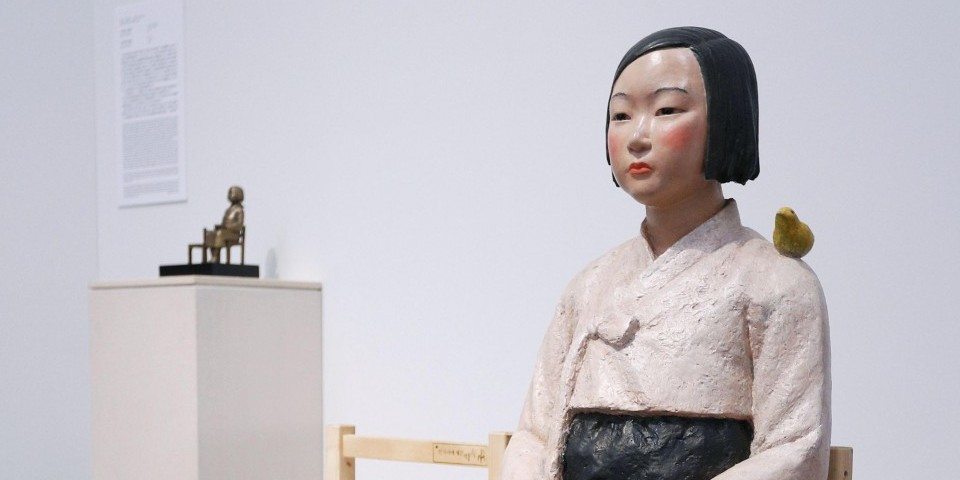Statement regarding the closure of “After ‘Freedom of Expression?’” at the Aichi Triennale in Japan, the time prior to its closure, and the future ahead
At Aichi Triennale 2019, the “After ‘Freedom of Expression?’” section, in which works that have been unjustly removed from domestic museums were gathered and presented together, has been the object of politicians’ unfair intervention and anonymous threats. In response, the organizers closed the exhibition because it was necessary, according to them, for the safe operation of the entire event.
Both as an artist collective engaged in the exploration of an art platform and as individual artists, we, the members of Artists’ Guild, consider this situation to be a crisis that threatens freedom of expression and erodes civilian speech in general, and wish to express our grave concern. We strongly protest against threats, intimidation, and unjust political intervention. And we strongly protest against any complicity in this sophisticated censorship in which political pressure, intimidation, risk management, precaution, and self-regulation are interwoven. We also strongly criticize the attitudes of those who inspire discrimination and deny history. We cannot turn a blind eye to exclusionism, discrimination against women, and historical revisionism.
It is the duty of the Aichi Triennale organizers to protect the rights and freedom of expression of exhibiting artists. In addition, the Government of Japan, which is a State Party to the International Covenant on Civil and Political Rights, is expected to “put in place effective measures to protect against attacks aimed at silencing those exercising their right to freedom of expression.” Therefore, the Japanese government is responsible for taking concrete steps to ensure the safety of the entire Aichi Triennale and to protect freedom of expression against threats and attacks. However, the exhibition remains closed even after a month since its closure. We urge the government to immediately take the specific steps necessary to ensure the safety of the relevant venues, and request that the Aichi Triennale Executive Committee promptly resume the exhibition “After “Freedom of Expression?’”
・・・
“After ‘Freedom of Expression?’” demonstrates that many cases of censorship in the form of intervention have taken place in this country. And the works displayed in this exhibition are only the tip of the iceberg; we should be aware that many other things have been hidden or crushed by censorship and oppression that are not apparent on the surface. Through the repetition of and resignation to such events, censorship and oppression have become internalized, and those who are involved in art have participated in a platform of restricted expression. The origin of the word “after” in the exhibition title indicates what occurred “prior to” the original exhibition. The difficult circumstances we currently face are the negative result of self-regulation, mutual coercion, atrophy and neglect that has accumulated together with external censorship and oppression.
Art does not only enjoy the protection of freedom of expression, but also exists to emancipate expression from those who attempt to distort its principles or dismiss it altogether, releasing it whenever it is forced into a corner. If those involved in art in Japan cannot even respond to the critical situation in which we find ourselves today, then a space of restricted expression will firmly remain for many years to come. What we should be attentive to is not the convenience of politicians nor the likes and dislikes of the public, but the things that are persecuted and rejected by such convenience and taste.
The division of roles into politics, economics, science and art for the sake of convenience and political control is, for an artist, comparable to being trapped in a cage. If artists cannot face the difficulties of society and the world without being trapped by such a scheme of division, then the activities of artists will become emasculated. The object of artists’ work comprises all things: weeds; aggregate; garbage; the environs of economics and politics; issues of poverty, gender, and nationality; everything that has been verbalized, and everything that has been excluded due to the difficulty in its verbalization.
For this reason, we, both individually and collectively, are determined to face the current situation through our individual voices and actions, through art, and through solidarity with other individuals and groups. This is not an issue that relates solely to the Aichi Triennale, but one of the challenges that artists should continue to confront and address. We are also one of the parties concerned. We will never renounce activities that co-exist with the complexity and perplexity of society.
Artists’ Guild
September 5, 2019
http://artists-guild.net/
Image: Kim Seo-kyung and Kim Eun-sung, Statue of a Girl of Peace, 2011. The sculpture was recently removed from view at the Aichi Triennale 2019. Via Artforum.
